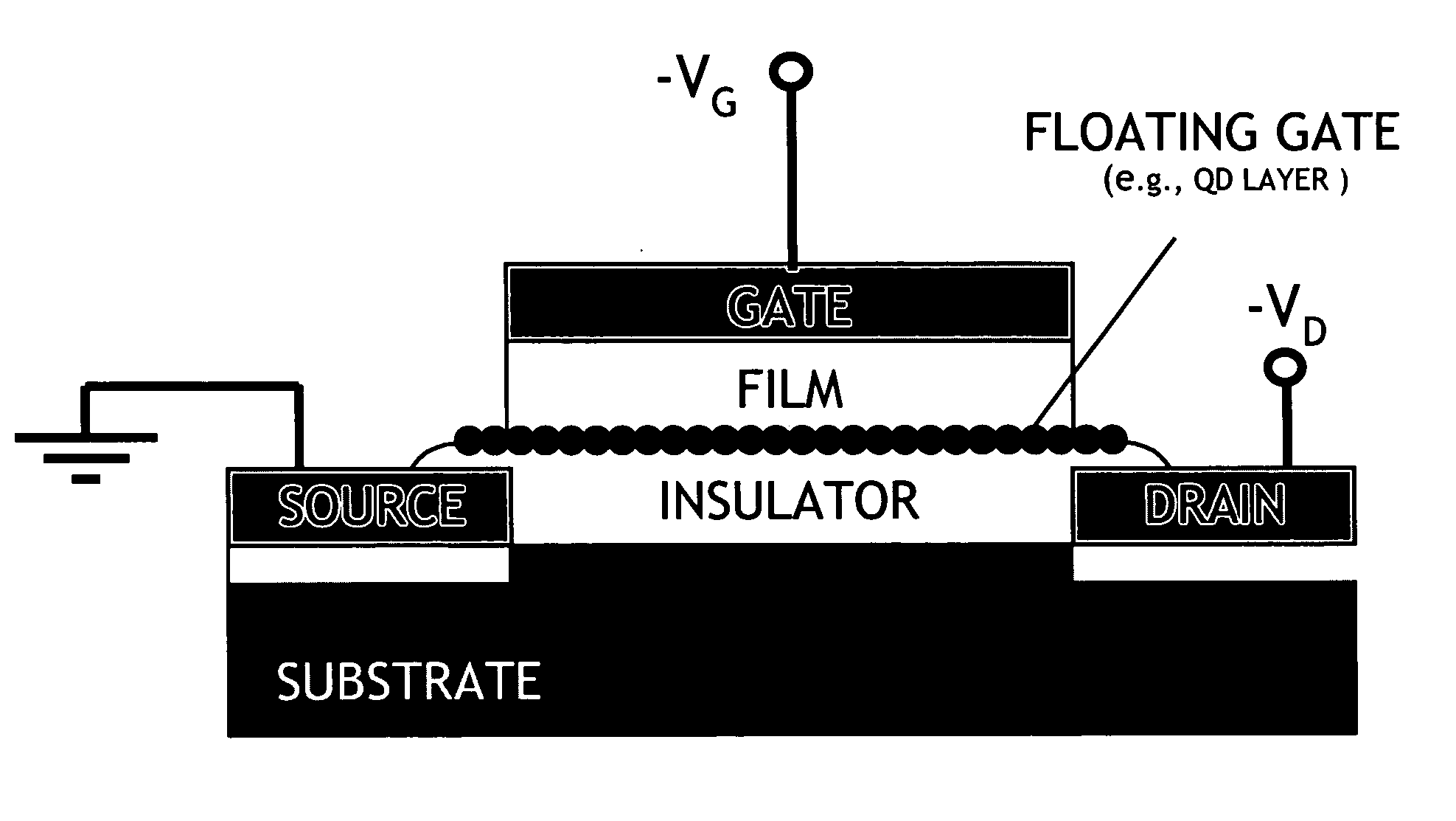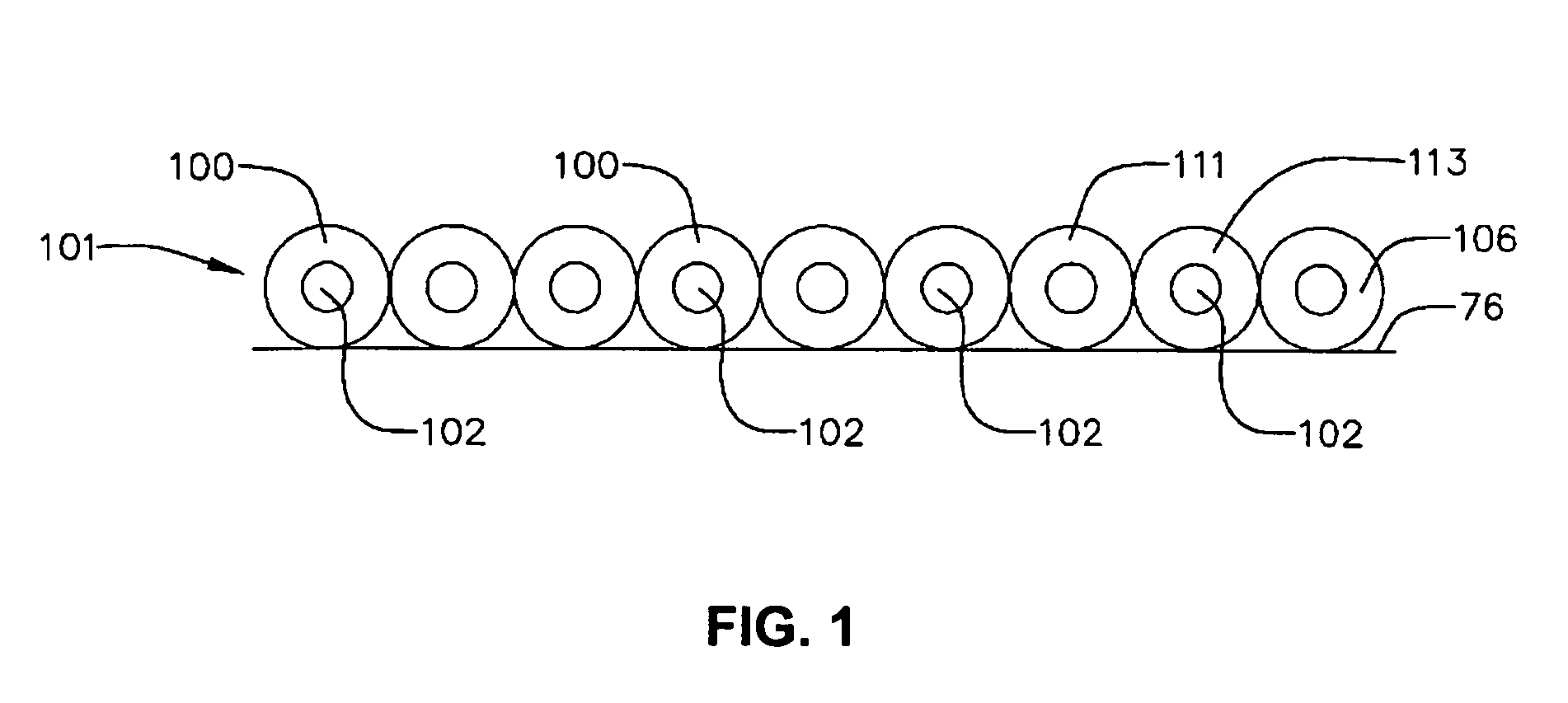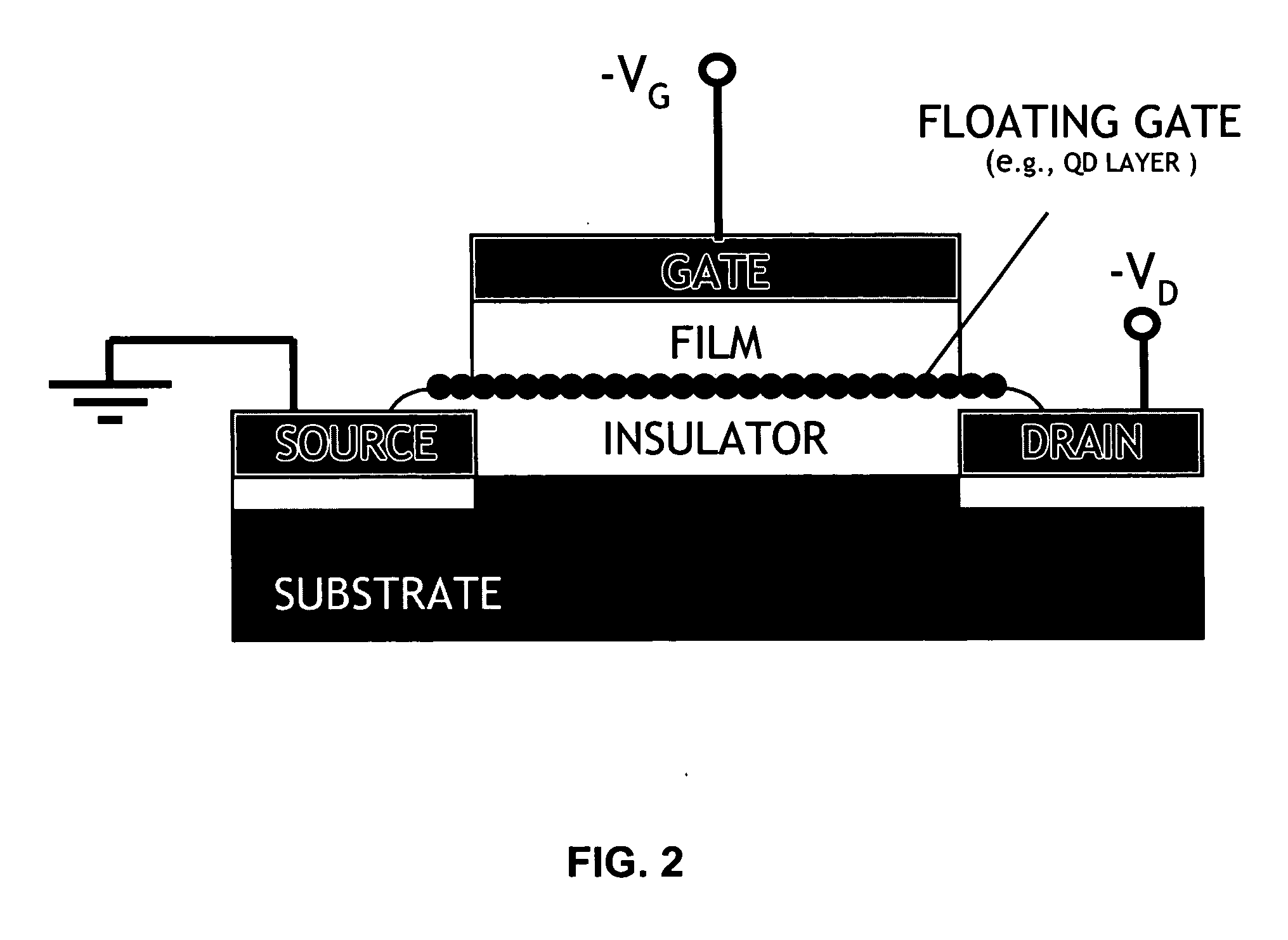Non-volatile memory device
a memory device and non-volatile technology, applied in nanoinformatics, instruments, transistors, etc., can solve problems such as affecting the threshold voltage of transistors, and achieve the effects of improving device retention characteristics, low cost, and tuning the conductivity of active layers
- Summary
- Abstract
- Description
- Claims
- Application Information
AI Technical Summary
Benefits of technology
Problems solved by technology
Method used
Image
Examples
Embodiment Construction
A memory device can include a room-temperature-integratable memory element. The memory element can be used in numerous electronic technology platforms, including organic, III-V, and even silicon electronics. The memory element can be a non-volatile memory device including a layer of charge trapping material having a selectable lateral conductivity, such as nanoparticles having a selectable outer layer. The memory element can be manufactured using room-temperature methodology to form a hybrid organic / inorganic device.
The memory element can be a chip-scale memory cell array. A chip-scale memory cell array can be formed by employing the charge trapping properties of nanoparticles monolayers. The individual memory cell configuration includes a field effect transistor structure in which nanoparticles form a floating gate. An example of this structure is shown in FIG. 1. The device is similar to other devices based on other materials, but has a number of advantages over those devices. Ex...
PUM
 Login to View More
Login to View More Abstract
Description
Claims
Application Information
 Login to View More
Login to View More - R&D
- Intellectual Property
- Life Sciences
- Materials
- Tech Scout
- Unparalleled Data Quality
- Higher Quality Content
- 60% Fewer Hallucinations
Browse by: Latest US Patents, China's latest patents, Technical Efficacy Thesaurus, Application Domain, Technology Topic, Popular Technical Reports.
© 2025 PatSnap. All rights reserved.Legal|Privacy policy|Modern Slavery Act Transparency Statement|Sitemap|About US| Contact US: help@patsnap.com



